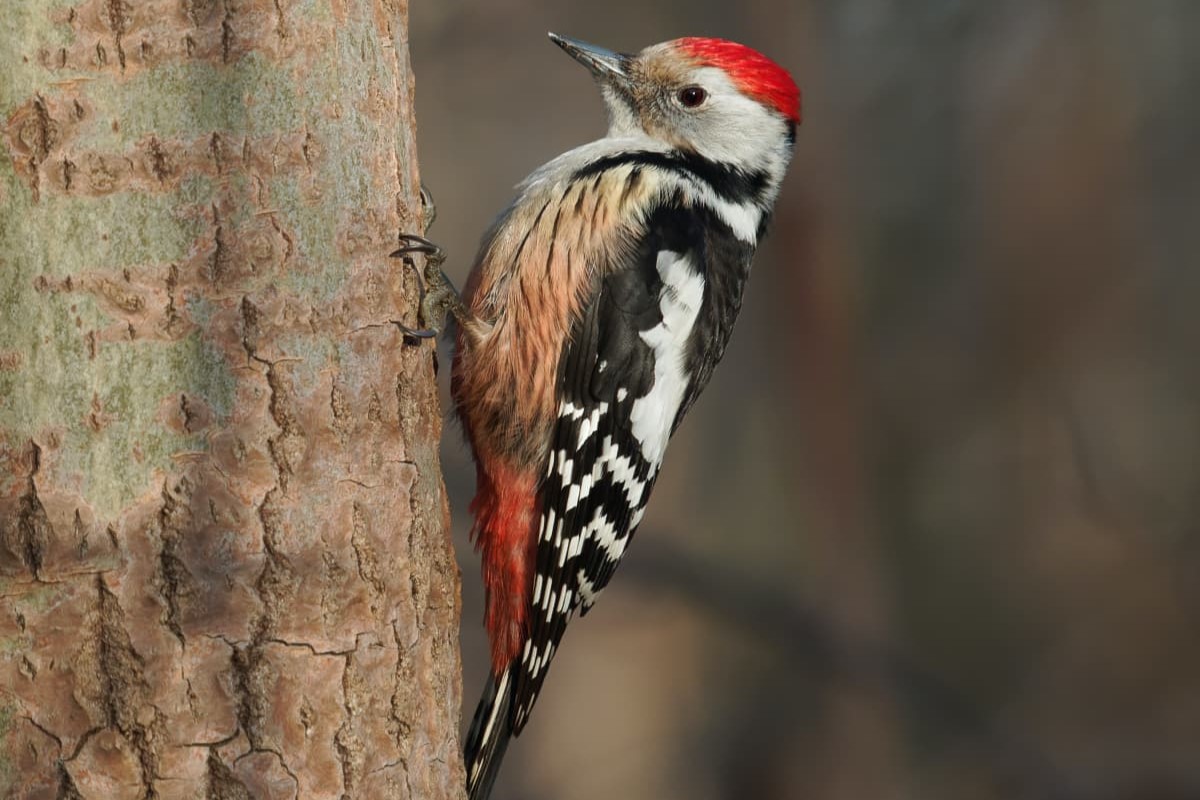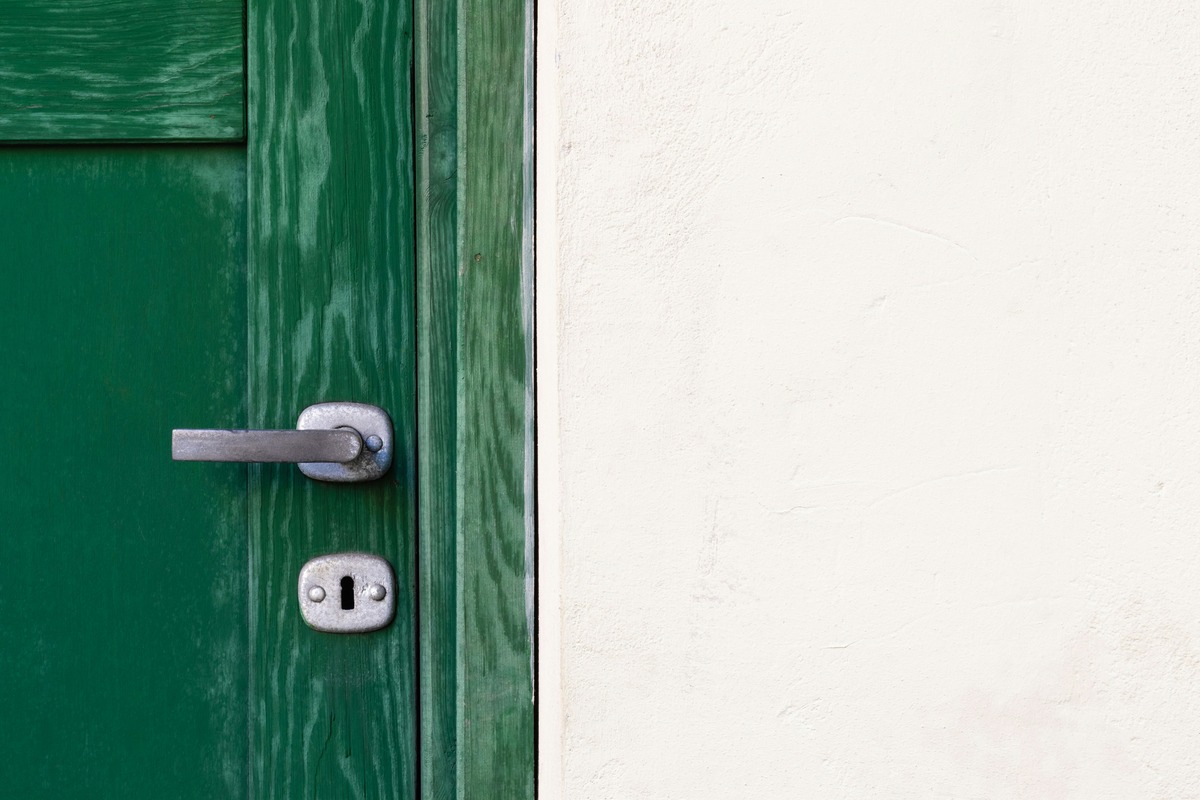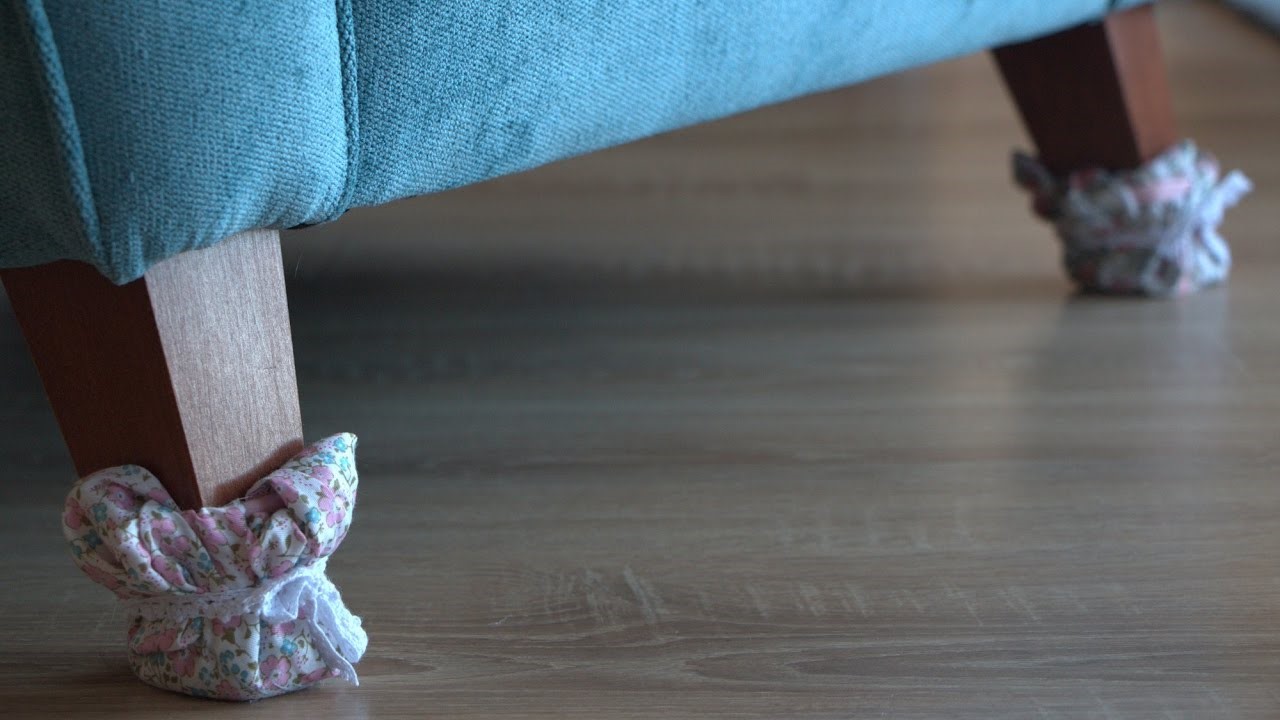Home>Home and Garden>The Ultimate Solution To Safely Stop Woodpeckers From Damaging Your House


Home and Garden
The Ultimate Solution To Safely Stop Woodpeckers From Damaging Your House
Published: January 20, 2024
Protect your home from woodpecker damage with our ultimate solution. Safely and effectively stop woodpeckers in their tracks. Perfect for home and garden protection.
(Many of the links in this article redirect to a specific reviewed product. Your purchase of these products through affiliate links helps to generate commission for Noodls.com, at no extra cost. Learn more)
Table of Contents
Introduction
Woodpeckers are fascinating birds known for their distinctive drumming and pecking sounds. While their behavior is a marvel to witness in the wild, it can become a nuisance when directed at homes and structures. The rhythmic tapping of a woodpecker's beak on the exterior of a house may seem harmless at first, but over time, it can lead to significant damage. From unsightly holes and structural weakening to potential entry points for other pests, the impact of woodpecker damage should not be underestimated.
Homeowners facing woodpecker-related issues often seek effective and humane solutions to deter these persistent birds without causing harm. Understanding woodpecker behavior, identifying signs of their presence, and implementing preventative measures are crucial steps in safeguarding your home from potential damage. By exploring natural and humane deterrents, such as visual and auditory methods, as well as physical barriers, you can create an environment that discourages woodpeckers from targeting your property.
In this comprehensive guide, we will delve into the world of woodpeckers, providing insights into their behavior and the telltale signs of their presence. We will explore the various methods for deterring woodpeckers, including environmentally friendly approaches that respect the balance of nature. Whether you're dealing with a current woodpecker issue or aiming to proactively protect your home, this guide offers practical strategies for safeguarding your property while preserving the well-being of these captivating birds.
Understanding Woodpecker Behavior
Woodpeckers are captivating creatures with distinctive behaviors that set them apart in the avian world. Understanding their natural tendencies and inclinations is crucial for effectively addressing and preventing potential damage to your home.
Drumming and Pecking
Woodpeckers are renowned for their rhythmic drumming and pecking, which serve various purposes. The resonating sounds produced by their beaks are used to communicate with other woodpeckers, establish territories, and attract mates. Additionally, woodpeckers drum on resonant surfaces to create a loud and distinct noise, often for territorial purposes.
Foraging and Nesting
These birds are adept foragers, using their strong beaks to excavate insects, larvae, and other invertebrates from trees and wooden structures. When seeking food, woodpeckers may inadvertently cause damage to the exterior of houses, sheds, and fences. Furthermore, woodpeckers may also excavate cavities for nesting, leading to potential structural weakening and unsightly holes in wooden surfaces.
Territorial Behavior
Woodpeckers are fiercely territorial, often defending their chosen nesting sites and foraging grounds. During the breeding season, territorial disputes can escalate, leading to increased drumming and pecking activities as woodpeckers assert their dominance and defend their territories.
Attraction to Noise and Reflections
The distinctive sounds produced by metal flashing, gutters, and vents can attract woodpeckers, as they perceive these resonant surfaces as potential territories or food sources. Additionally, the reflective surfaces of windows and vehicles may provoke woodpeckers to peck and drum, mistaking their own reflections for intruding rivals.
Understanding these behaviors provides valuable insight into the motivations behind woodpeckers' interactions with human structures. By recognizing the reasons behind their actions, homeowners can develop effective strategies to deter woodpeckers and protect their homes from potential damage.
By gaining a deeper understanding of woodpecker behavior, you can proactively implement measures to mitigate the risk of damage to your property, creating a harmonious environment that respects both the needs of homeowners and the natural instincts of these captivating birds.
Identifying Woodpecker Damage
Woodpecker damage to homes and structures can manifest in various ways, and recognizing the signs is essential for implementing targeted deterrent measures. Identifying woodpecker damage early can help prevent further deterioration of the property's exterior and minimize potential repair costs. Here are the key indicators of woodpecker activity:
Holes and Cavities
Woodpeckers create distinctively shaped holes and cavities in wooden surfaces as they forage for insects or excavate nesting sites. These holes are typically cylindrical or rectangular and may vary in size depending on the woodpecker species and the intensity of their activity. Fresh woodpecker holes often exhibit clean edges, indicating recent pecking.
Pecking Patterns
The repetitive pecking patterns left by woodpeckers can be observed on wooden siding, trim, fascia boards, and other exterior surfaces. These patterns may appear as rows of shallow holes or irregularly spaced indentations, reflecting the bird's persistent efforts to access food or establish territory.
Wood Chips and Debris
Accumulations of wood chips, bark, and other debris near the base of the affected area are telltale signs of woodpecker activity. As woodpeckers excavate cavities or search for insects, they dislodge wood fragments and debris, which often collect on the ground below the targeted site.
Structural Weakness
Prolonged woodpecker activity can compromise the structural integrity of wooden components, leading to weakened areas and potential vulnerabilities. This weakening may not be immediately visible but can pose long-term risks if left unaddressed.
Disturbed Insulation
In cases where woodpeckers gain access to the interior of a structure, such as through vents or eaves, they may disturb insulation materials as they explore potential nesting sites. Evidence of displaced or damaged insulation can indicate woodpecker intrusion.
Visual and Auditory Cues
Observing woodpeckers actively pecking or drumming on the exterior of a property is a clear indication of their presence. Additionally, the distinct sounds of woodpeckers in action, characterized by rapid pecking or drumming, can alert homeowners to ongoing woodpecker activity.
By familiarizing themselves with these signs of woodpecker damage, homeowners can promptly address the issue and take proactive steps to deter woodpeckers from causing further harm to their property. Identifying woodpecker damage early empowers homeowners to implement effective deterrent strategies, preserving the integrity of their homes while respecting the natural behaviors of these captivating birds.
Natural and Humane Deterrents
When addressing woodpecker-related issues, homeowners often seek natural and humane deterrents to discourage these persistent birds from causing damage to their properties. By embracing environmentally friendly methods, homeowners can effectively deter woodpeckers while respecting the balance of nature. Here are several natural and humane deterrents that can help mitigate woodpecker activity without causing harm to the birds:
Visual Deterrents
Visual deterrents leverage natural aversion techniques to dissuade woodpeckers from targeting specific areas. Reflective objects, such as aluminum foil strips, Mylar tape, or reflective bird diverters, can create disorienting flashes of light and movement, deterring woodpeckers from pecking at vulnerable surfaces. Additionally, hanging windsocks or brightly colored flags near affected areas can introduce visual disturbances that discourage woodpecker activity.
Auditory Deterrents
Auditory deterrents capitalize on noise-based aversion to discourage woodpeckers from frequenting specific locations. Utilizing devices that emit distress calls of woodpeckers or predatory bird sounds can create an environment that is perceived as unsafe by woodpeckers, prompting them to seek alternative foraging and nesting sites. Furthermore, wind chimes and other noise-producing objects can introduce unfamiliar sounds that deter woodpeckers without causing harm.
Physical Barriers
Physical barriers offer a non-invasive approach to protecting vulnerable surfaces from woodpecker damage. Installing hardware cloth or lightweight, flexible mesh over susceptible areas can create a barrier that prevents woodpeckers from accessing the targeted surfaces. This approach allows homeowners to safeguard their properties without resorting to harmful or chemical-laden deterrents.
Habitat Modification
Modifying the immediate environment to make it less appealing to woodpeckers can effectively discourage their presence. By removing dead trees, decaying stumps, and other potential nesting sites from the vicinity of the property, homeowners can reduce the attractiveness of the area to woodpeckers. Additionally, ensuring that bird feeders are positioned away from the house can minimize the likelihood of woodpeckers frequenting the immediate vicinity.
Natural Repellents
Natural repellents, such as spicy sprays or mixtures containing ingredients like garlic and chili powder, can be applied to targeted surfaces to deter woodpeckers. These repellents exploit the birds' aversion to pungent or spicy odors, creating an inhospitable environment without causing harm to the woodpeckers.
By embracing these natural and humane deterrents, homeowners can effectively mitigate woodpecker activity while upholding the well-being of these captivating birds. Implementing a combination of visual, auditory, and physical deterrents, alongside habitat modifications and natural repellents, can create an environment that discourages woodpeckers from causing damage to homes and structures. This harmonious approach to woodpecker deterrence exemplifies the coexistence of human habitats and natural wildlife, fostering a balanced and respectful relationship between homeowners and the avian inhabitants of their surroundings.
Installing Woodpecker Deterrents
Implementing effective woodpecker deterrents is essential for safeguarding your home from potential damage while respecting the natural behaviors of these captivating birds. By strategically installing deterrent measures, homeowners can create an environment that discourages woodpeckers from targeting vulnerable surfaces. Here are several methods for installing woodpecker deterrents:
Visual Deterrents
Visual deterrents capitalize on reflective and disorienting elements to discourage woodpeckers from pecking at specific areas. Install aluminum foil strips, Mylar tape, or reflective bird diverters on the affected surfaces to create flashes of light and movement that deter woodpeckers. Additionally, hanging windsocks or brightly colored flags near vulnerable areas introduces visual disturbances that discourage woodpecker activity.
Auditory Deterrents
Auditory deterrents utilize sound-based aversion techniques to create an environment that is perceived as unsafe by woodpeckers. Install devices that emit distress calls of woodpeckers or predatory bird sounds near targeted surfaces. Alternatively, hanging wind chimes or other noise-producing objects can introduce unfamiliar sounds that deter woodpeckers without causing harm.
Physical Barriers
Installing physical barriers over susceptible areas is an effective method for protecting your home from woodpecker damage. Use hardware cloth or lightweight, flexible mesh to create a barrier that prevents woodpeckers from accessing vulnerable surfaces. Ensure that the barriers are securely installed and cover the entirety of the targeted areas to effectively deter woodpeckers.
Habitat Modification
Modifying the immediate environment around your home can make it less appealing to woodpeckers. Remove dead trees, decaying stumps, and other potential nesting sites from the vicinity of the property. Additionally, position bird feeders away from the house to minimize the likelihood of woodpeckers frequenting the immediate vicinity.
Natural Repellents
Apply natural repellents, such as spicy sprays or mixtures containing garlic and chili powder, to targeted surfaces to deter woodpeckers. Ensure that the repellents are applied in accordance with safety guidelines and reapply them as needed to maintain their effectiveness.
By implementing these woodpecker deterrent methods, homeowners can create a harmonious environment that safeguards their homes from potential damage while respecting the natural instincts of woodpeckers. These deterrent measures contribute to a balanced coexistence between human habitats and the wildlife in their surroundings, exemplifying a respectful approach to mitigating woodpecker activity.
Conclusion
In conclusion, addressing woodpecker-related challenges requires a comprehensive understanding of these captivating birds' behaviors and the potential impact of their activities on residential structures. By recognizing the natural tendencies of woodpeckers, homeowners can proactively implement measures to safeguard their properties while respecting the balance of nature.
Identifying signs of woodpecker damage, such as distinctive holes, pecking patterns, and wood debris, empowers homeowners to take timely action to mitigate further deterioration of their homes' exteriors. Early intervention and the implementation of natural and humane deterrents, including visual, auditory, and physical measures, are essential for creating an environment that discourages woodpeckers without causing harm to the birds.
Furthermore, embracing habitat modifications and natural repellents contributes to a holistic approach to woodpecker deterrence, promoting a harmonious coexistence between human habitats and the avian inhabitants of the surrounding environment. By strategically installing deterrent measures and modifying the immediate surroundings, homeowners can effectively mitigate woodpecker activity while upholding the well-being of these captivating birds.
Ultimately, the coexistence of human habitats and natural wildlife, including woodpeckers, hinges on the respectful implementation of deterrent strategies that prioritize the protection of residential structures and the preservation of the birds' natural behaviors. By integrating natural and humane deterrents into their approach, homeowners can create a balanced and respectful relationship with woodpeckers, fostering a harmonious environment where both human and avian inhabitants thrive.
In essence, the ultimate solution to safely stop woodpeckers from damaging your house lies in a holistic and considerate approach that leverages natural aversion techniques, physical barriers, and habitat modifications. By embracing these strategies, homeowners can protect their properties while respecting the captivating behaviors of woodpeckers, exemplifying a harmonious coexistence that benefits both human dwellings and the diverse wildlife that enriches our surroundings.









